3.3 Sensory and Motor Development
Sleeping, eating, and crying are easy to observe; but suppose you could time-
One sense is definitely operational before we leave the womb. Using ultrasound, researchers can see startle reactions in fetuses in response to noise, showing that rudimentary hearing capacities exist before birth. Recall from the previous chapter that the basics of vision may also be in place by about the seventh month of fetal life.
Table 3.6 lists other interesting facts about newborn senses. Now, let’s focus on vision because the research in this area is so extensive, the findings are so astonishing, and the studies devised to get into babies’ heads are so brilliantly planned.

What Do Newborns See?
Imagine you are a researcher who wants to figure out what a newborn can see. What do you do? As might be logical, you put the baby into an apparatus, present images, and watch her eyes move. Specifically, researchers use the preferential-
You can notice preferential looking and habituation in operation right now in your life. If you see or hear something new, you look up with interest. After a minute, you habituate and return to reading this book.
By showing newborns small-
What visual capacities do we have at birth? A century ago, the first American psychologist, William James, described the inner life of the newborn as “one buzzing, blooming confusion.” Studies exploring face perception (making sense of human faces) offer scientific data about the truth of James’ ideas.
89
Focusing on Faces
Actually, when we emerge from the womb, we are primed to selectively attend to the social world. When presented with the paired stimuli in Figure 3.6, newborns spend more time looking at the face pattern than at the scrambled pattern. They follow that facelike stimulus longer when it is moved from side to side (Farroni, Massaccesi, & Simion, 2002; Slater and others, 2010).
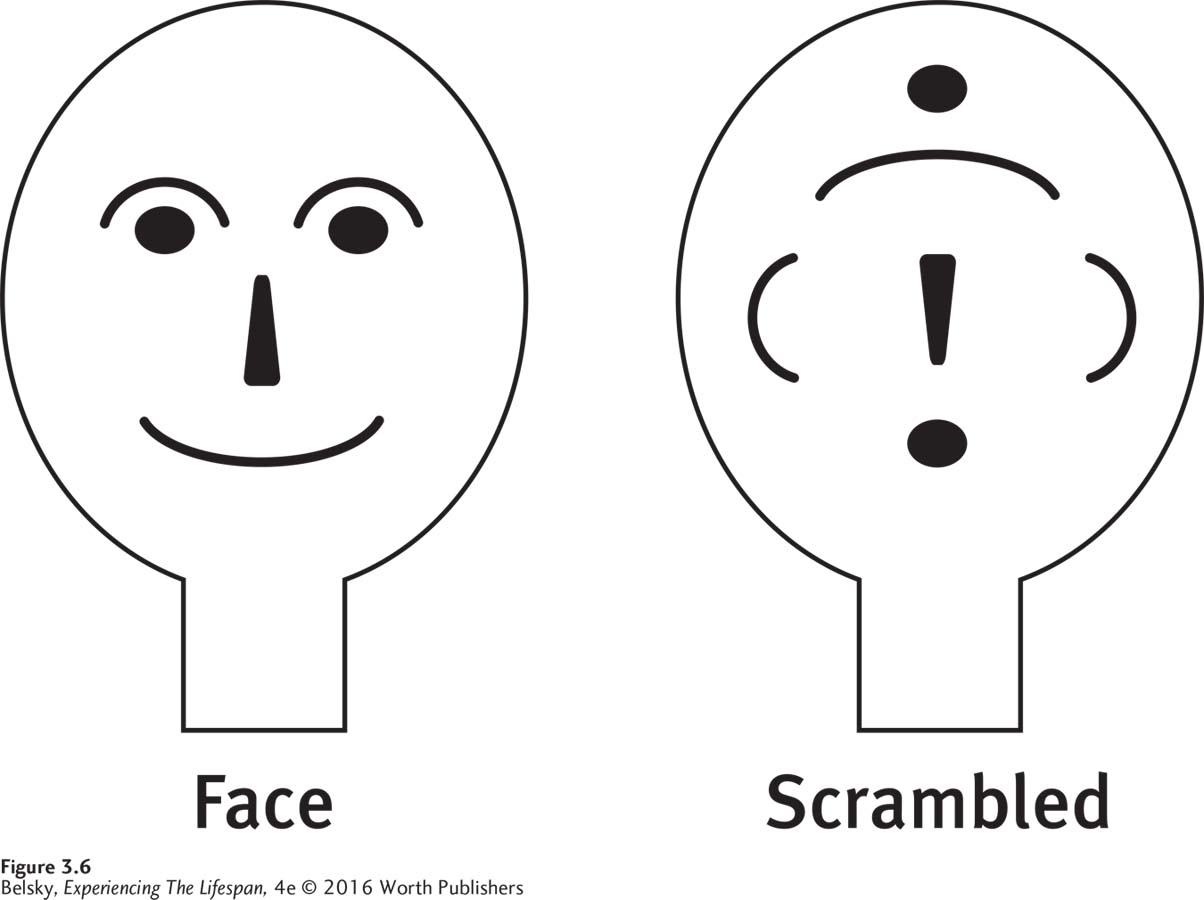
The story gets more interesting. Newborns can make amazing distinctions. During their first week of life, they prefer to look at a photo of their mother compared to one of a stranger (Bushnell, 1998). Newborns prefer attractive-
Researchers selected photos of attractive and unattractive women, then took infants from the maternity ward and measured preferential looking. The attractive faces got looked at significantly longer—
We also seem prewired to gravitate to relationships. Newborns look longer at faces when the “eyes” are gazing directly at them (Frischen, Bayliss, & Tipper, 2007). They can mimic facial expressions that an adult makes, such as sticking out the tongue (Meltzoff & Moore, 1977). So if you have wondered why you get uncomfortable when someone stares at you, or have agonized at your humiliating tendency to mimic everyone else’s gestures and facial tics, this research offers answers. It’s not a personal problem. It’s built into our human biology, beginning from day one!
With experience, our sensitivity to faces—
Developmentalists tested European American babies at different points during their first year of life for their ability to discriminate between different faces within their own racial group and those belonging to other ethnicities (African American, Middle Eastern, and Chinese). While the 3-
Why did this skill disappear? The cause, as you may have guessed, is cortical pruning—
Is Prejudice Partly Prewired?
This tantalizing research suggests that spending our first years of life in a racially homogenous environment might promote prejudice because the resulting neural atrophy could blunt our ability to decode the emotions of other ethnic groups. Amazingly, in testing U.S. teens adopted from Eastern European or Asian orphanages (places where infants are only exposed to caregivers of their ethnicity), scientists discovered that this was true. The longer a child lived in an orphanage, the less sensitive that adolescent was at picking up facial expressions of people from other races. Moreover, fMRI recordings showed an unusual spike in the amygdala (our brain’s fear center) when these young people viewed “foreign” faces. Therefore, simply being born in a multicultural city, such as New York or Chicago, might make us more tolerant because that experience prewires us visually to be more sensitive to the feelings of other races (Telzer and others, 2013)!
90
The main conclusion, however, is that William James was wrong. Newborns don’t experience the world as a “blooming, buzzing confusion.” We arrive in life with a built-
Now let’s trace another visual capacity as it comes on-
Seeing Depth and Fearing Heights
Imagine you are a researcher facing a conundrum: How can I find out when babies develop depth perception—the ability to “see” variations in heights—
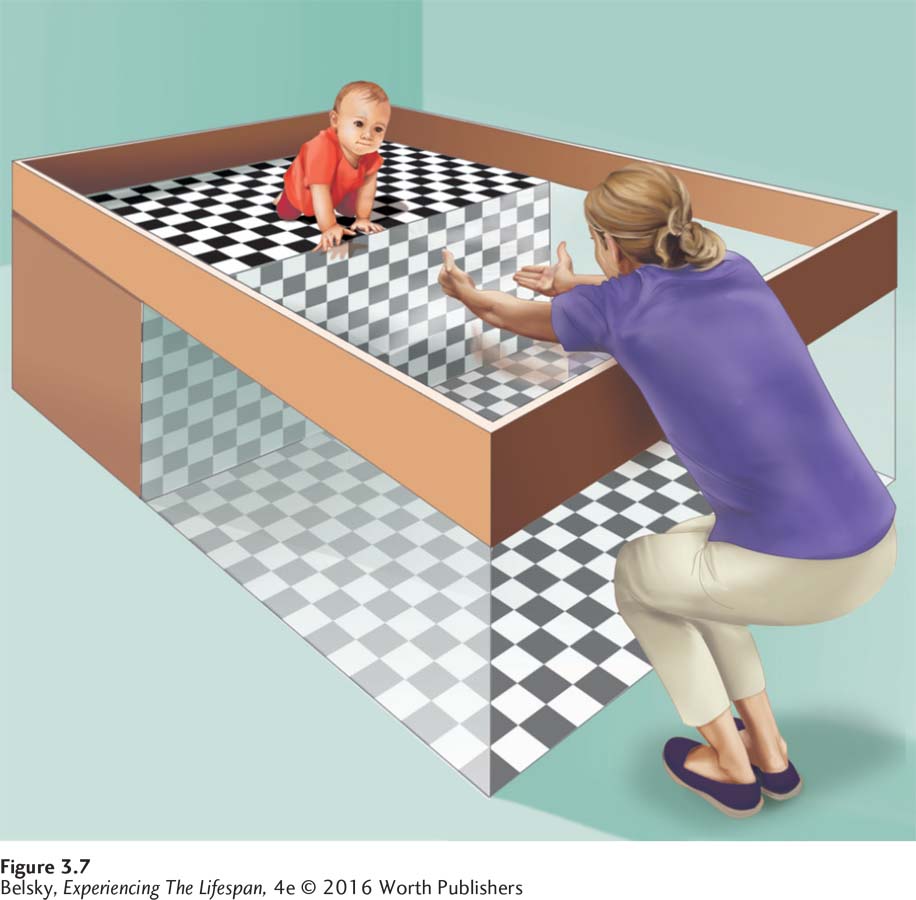
In sum, the sick feeling you have when leaning over a balcony—
Expanding Body Size
Our brain may expand dramatically after birth. Still, it’s out-
Imagine taking time-
Now think of Mickey Mouse, Big Bird, and Elmo. They, too, have relatively large heads and small bodies. Might our favorite cartoon characters be enticing because they mimic the proportions of a baby? Did the deliciously rounded infant shape evolve to seduce adults into giving babies special care?
91
Mastering Motor Milestones
Actually, all three growth principles spelled out in the previous chapter—
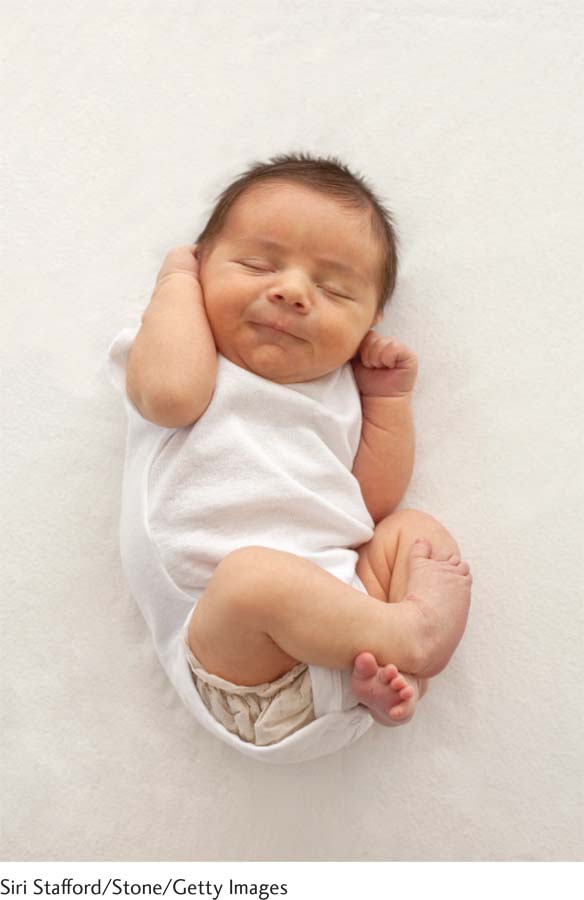
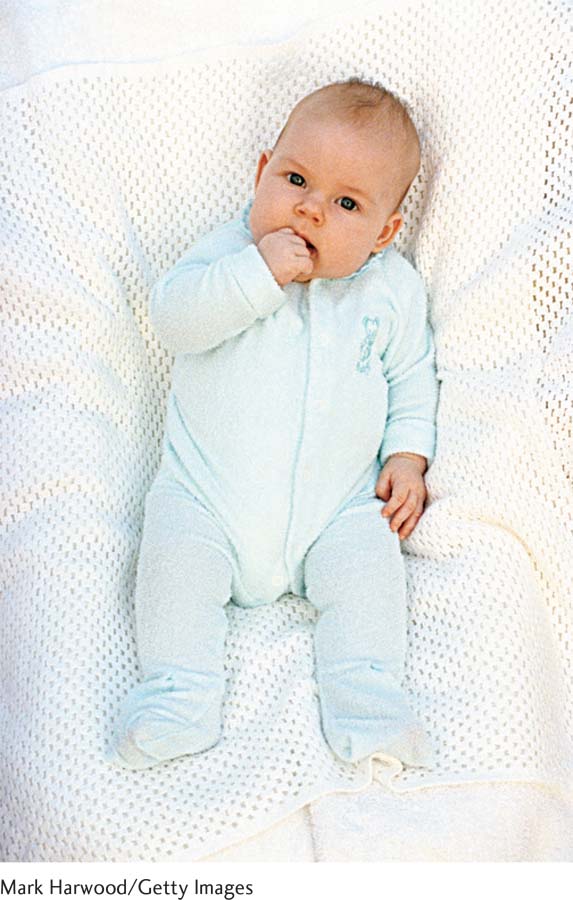
But the most important principle programming motor abilities throughout childhood is the mass-
Variations (and Joys) Related to Infant Mobility
Charting these milestones does not speak to the joy of witnessing them unfold—
The charts don’t mention the hilarious glitches that happen when a skill is emerging—
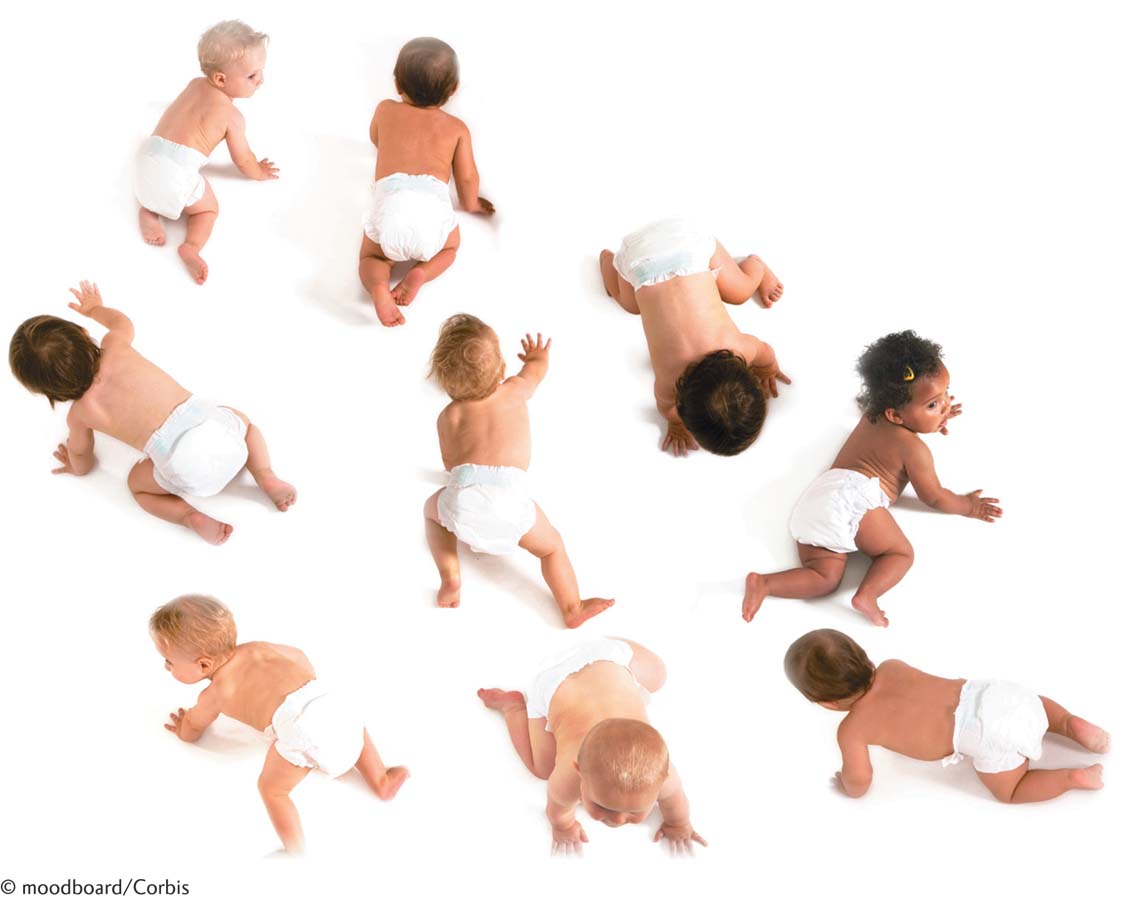
Actually, rather than viewing motor development in static stages, researchers now stress the variability and ingenuity of babies’ passion to get moving into life (Adolph, 2008). Consider the “creeping” or belly-
92
But suppose a child is behind schedule. Let’s say your son is almost 15 months old and has yet to take his first solo step? And what about the fantasies that set in when an infant is ahead? “Only 8 months old, and he’s walking. Perhaps my baby is special, a genius!”
What typically happens is that, within weeks, the worries become a memory and the fantasies about the future are shown to be completely wrong. Except in the case of children who have developmental disorders, the rate at which babies master motor milestones has no relation to their later intelligence. Since different regions of the cortex develop at different times, why should our walking or grasping-
But even if a baby’s early locomotion (physically getting around) does not mean he will end up an Einstein, each motor achievement provokes other advances.
Motor Milestones Have Widespread Effects
Consider, for instance, that landmark event: reaching. Because it allows babies to physically make contact with the world, the urge to grasp objects propels sitting, as a child will tolerate plopping over in her hunger to touch everything she can (Harbourne and others, 2013).
Now consider how crawling changes the parent–
INTERVENTIONS: Baby-Proofing, the First Person–Environment Fit
Motor development presents perils. Now safety issues become a concern. How can caretakers encourage these emerging skills and still protect children from getting hurt? The answer is to strive for the right person–
Get on the floor and look at life from the perspective of the child. Cover electrical outlets and put dangerous cleaning substances on the top shelf. Unplug countertop appliances. Take small objects off tables. Perhaps pad the furniture corners, too. The challenge is to anticipate possible dangers and to stay one step ahead. There will come a day when that child can pry out those outlet covers or ascend to the top of the cleanser-
Tying It All Together
Question 3.10
Your 3-
You are using a kind of preferential-
Question 3.11
Tania says, “Visual capacities improve dramatically during the first year of life.” Thomas replies, “No, in some ways our vision gets worse.” Who is correct: Tania, Thomas, or both students? Why?
Both Tania and Thomas are right. In support of Tania’s “dramatic improvement” position, while newborns are legally blind, vision improves to 20/20 by age 1. (Another example is the visual cliff research.) Thomas is also correct that in some ways vision gets worse during infancy. He should mention the fact that by 9 months of age we have “unlearned” the ability to become as sensitive to facial distinctions in people of other ethnic groups.
Question 3.12
One implication of the face perception studies is that the roots of adult prejudice begin (choose one) at birth/during the second 6 months of life/after age 2.
The roots of adult prejudice may begin during the second 6 months of life.
Question 3.13
If Alicia’s 8-
At 8 months of age, the child should be frightened of the cliff.
Question 3.14
What steps would you take to baby-
Your answers might include installing electrical outlet covers; putting sharp, poisonous, and breakable objects out of a baby’s reach; carpeting hard floor surfaces; padding furniture corners; installing latches on cabinet doors; and so on.